PTZOptics vs AViPAS — Comparison of PTZ Cameras
AViPAS vs PTZOptics
If you want a top-of-the-line camera, it’s always coming down to this choice – AViPAS vs PTZOptics.
These two technology giants launched in 2014 and have been neck and neck in the pioneering of innovative products in the security, broadcasting, and audiovisual industries. They introduce consumer-friendly features in their PTZ cameras. They also steadily increased the field of view in their security cameras, used more powerful lenses, and improved the zoom capacity for PTZ cameras.
There’ll be little to complain about when you buy a PTZ camera from PTZOptics or AViPAS. These companies offer motion-tracking cameras and have active customer services that ensure you get the most comfortable experience with their cameras after purchase. They continually upgrade their products based on user feedback and technological advancements.
But if AViPAS and PTZOptics are so reliable, how can you decide which PTZ camera to buy from either brand? Thankfully, these companies have specific areas they focus their innovation on; they also have different features in their camera technology. You can pick a product based on how these slight differences influence your use case.
Camera
The PTZOptics cameras have a maximum field of view of 60.7°, just 0.2° narrower than you get with AViPAS cameras. In real-world usage, you won't notice a difference, but if you just want to get the wider-angle lens, go for an AViPAS camera like the AViPAS AV-1281G 10X. You will also get three zoom controls — auto, manual, and one-push, to give you complete control over how much detail gets into your camera lens.
Speaking of zoom capabilities, PTZOptics also takes the cake. The brand has surpassed the 10 — 20X threshold of AViPAS cameras. You can achieve 30X image magnification with the optical zoom lens of the PTZOptics 30X-SDI and 30X-NDI cameras, making them the ideal choices for long-distance, high-definition video recording. However, AViPAS gets within touching distance of PTZOptics' lead in the zoom race with their dual zoom technology. Many high-powered AViPAS cameras have optical and digital zoom; the hardware and software combine to ensure the zooming is smooth and things don't get too blurry when you approach maximum zoom.
So, both companies take a different approach to zooming, with the PTZOptics brand going for the maximum zoom, while AViPAS opts for a more finessed implementation.
All PTZOptics and AViPAS PTZ cameras shoot at 1080p with a 1920 x 1080 resolution. So you can expect sharpness and accurately-represented colors in your videos. You get an ISP processing algorithm in the AViPAS AV-1560 20x for clear images and better depth. I found the manual and auto white balance modes in the AViPAS cameras particularly helpful for recording during diverse weather and lighting conditions. The brand's products also use backlight compensation to compensate for dark rooms.
The PTZOptics vs AViPAS camera module debate has a winner. I recommend the AViPAS AV-1560 20x for the best shots. Its dual zoom, noise reduction, ISP processing algorithm, and usability indoors and outdoors make it the most versatile model. The PTZOptics 30X-SDI is also a decent option for people who want to record longer distances and live stream directly from their camera.
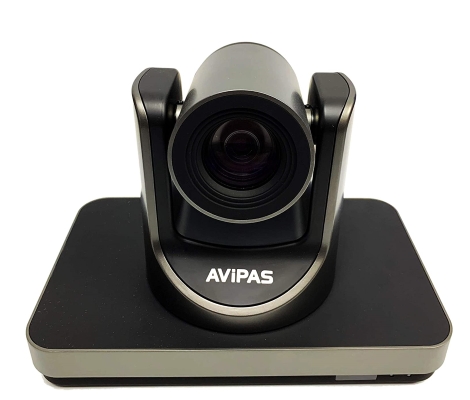
- Zoom type: auto, manual, indoor, outdoor, one-click
- Tamron high-quality super telephoto lens
- Supports H.265 encoding
- HDMI & 3GSDI output
- Optical zoom 20 x
- 1920 x 1080 full HD
- 9.4 x 6.7 x 5.7 inches and 2.2 pounds
Image Sensor
The image sensors in cameras from both brands are similar. They have cameras with the popular Complementary Metal Oxide Semiconductor (CMOS) sensor. However, PTZOptics uses this technology in more camera models.
Regarding their sensor similarities, the most alike models from both brands are the AViPAS AV-1560 20x and the PTZOptics 20X-NDI-GY.
The AViPAS model's image sensor comes with a 1-Chip CMOS 1/ 2.7, 2.07 MP, and a 55dB Signal-to-Noise Ratio. The PTZOptics 20X-NDI-GY comes with 2.1 megapixels, 1/ 2.7, and a 55dB CMOS sensor that guarantees fantastic video quality with a 2D and 3D noise reduction. Its noise-reduction is better than that of the AViPAS AV-1560, but not enough for you to think the AViPAS model is inadequate.
PTZOptics cameras excel in their lowlight shots and noise reduction. They use a low noise CMOS sensor to keep videos sharp without suffering from digital graining. It also throws 2D and 3D noise reduction technology into almost all models to ensure smooth images and background details. The only AViPAS cameras that can match this low-noise approach are the AV-1080 10X and the AV-1081W10X, which also use CMOS sensors and 2D/3D noise reduction technology.
Despite the similarities between the image sensors of PTZOptics vs AViPAS cameras, the PTZOptics units top the charts, thanks to their fantastic noise reduction. Though the AViPAS models reduce noise in low light, they don't do as well as PTZOptics cameras. Therefore, I recommend the PTZOptics 30X-NDI for its sensor optimization.
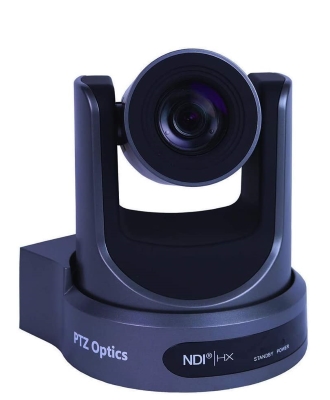
- High performance in low light scenarios
- Low noise CMOS sensor
- Wide dynamic range
- Full HD 1920x1080p
- 60 frames per second
- 60.7 degree wide-angle lens
- 5.6 x 6.7 x 7.8 inches and 5.2 pounds
Lens
The lens’ reliability and telephoto abilities of cameras from both companies make them excellent for video conferencing in a small space with many people fitting into the shot. Also, most of their cameras produce smooth subject movement and playback, thanks to shooting at 60 FPS. Only two models from PTZOptics record videos at 30 FPS, but they made up for that drawback with a powerful 20X zoom lens.
The top-quality Tamron lens on many AViPAS models like the AV-1560-20X guarantees superb video quality, especially when capturing wide-angle shots. It offers a superior angle view of 60.9°. PTZOptics cameras are no slouches either; many models like the 30X-SDI and the 20X-NDI-GY use Sony lenses, which deliver vivid images when paired with the 1920 x 1080 resolution.
AViPAS cameras like the AV-108 10X, the AV-1281G 10X, and the AV-1281 have lenses you can adjust manually, automatically, or using the push method. When combined with their 10X zooming, you can see subjects at the back of a large hall when you set the camera up. You can also determine how fast the cameras zoom and how much of your input is necessary for smooth zooming.
The Sony lens on the PTZOptics 20X-NDI-GY has a 4.4 — 88.5 mm focal length. This lens provides a zoom range of 20x, with excellent wide-angle and close-focus shots, making it suitable for events and conferencing. Its f/1.8 - f/2.8 lens aperture and 0.5 lux at 1/1.8 low light requirement ensure it operates well under low light.
So, while this category AViPAS vs PTZOptics is close, I believe the PTZOptics 20X-NDI-GY wins because of its versatility. The AViPAS AV-1080 and the PTZOptics 20X-SDI are worthy mentions because their lenses quickly adjust the light entering the sensors, making them ideal for indoor and outdoor use.
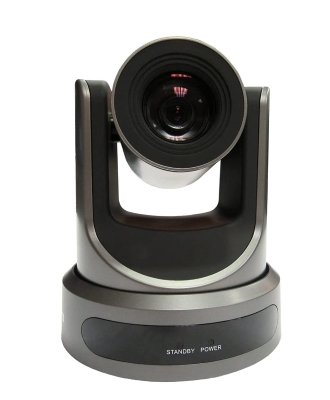
- Noise cancellation with low noise CMOS sensor
- Video connections:HDMI, 3G-SDI & IP Streaming
- High performance in low illumination situations
- Plug-and-Play USB Connectivity
- Bluetooth Capable
- Full HD 1920x1080p
- 60.7 degreewide-anglelens
Video Output
PTZOptics cameras like the 20X-SDI, 30X-SDI, and the 20X-NDI-GY can send 1080p video recording over 3G-SDI, HDMI, and H.264 or H.265 streaming. They allow you to stream live on any public online platform like YouTube and Facebook by inputting your streaming information. AViPAS models like the AV-1080 and AV-1560-20X also use 3G-SDI video transmission, ideal for sending 1080p videos over long distances.
If you want access to low-budget streaming, go for the AViPAS NDI cameras. The NDI technology lets you switch between streaming at low bandwidths and high-end video production, which is ideal if you have slow internet. PTZOptics and AViPAS also use standard HDMI for video output.
Both companies have perfected broadcasting and live-streaming, so you won’t go wrong when you purchase any. You will find IP streaming technology in PTZOptics cameras like the 20X-USB Gen1 and AViPAS AV-1081W, letting you stream directly from the devices. But PTZOptics takes the win for having more cameras with better-quality video output, like the 20X-NDI-GY.

- Noise cancellation with low noise CMOS sensor
- Video connections:HDMI, 3G-SDI & IP Streaming
- High performance in low illumination situations
- Plug-and-Play USB Connectivity
- Bluetooth Capable
- Full HD 1920x1080p
- 60.7 degreewide-anglelens
Power
The different options for powering the PTZ cameras from AViPAS and PTZOptics make installation easy and ensure you never run out of juice. There is always the option to supply energy with a power brick, which comes with every camera.
You can power some cameras from PTZOptics and AViPAS over a PoE (Power over Ethernet). But for the PTZOptics vs AViPAS models’ power supply comparison, I recommend the AViPAS AV-1081W 10X because it includes a low power sleep mode.
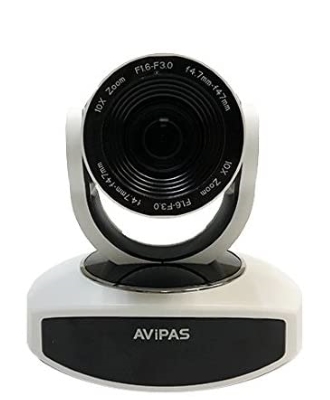
- Connectivity technology: HDMI, IP Streaming
- H.264/H.265 video compression
- High SNR of CMOS sensor
- Low light
- 60.9° wide-angle lens
- 1920 x 1080 high resolution
- 6 x 5 x 6 inches and 5.2 pounds
Control
You can control AViPAS cameras over LAN, RS-485, RS-232, and an IR remote controller. This controller allows you to choose from 255 presets while panning, tilting, and zooming with your camera.
The pan, tilting, and zooming movements of the AViPAS cameras are smooth and precise, and you can control them with your IR remote control, VISCA-over-IP controller, or ONVIF. Units like the AV-1080 even have quiet PTZ mechanisms. You can also control the AViPAS camera with the RS-232 input/ outputs compatible with Pelco-P, Pelco-D, and VISCA protocols.
The PTZOptics units, on the other hand, have NDI Studio control compatible with professional IP Joysticks. They have a unique control integration that gives you access to the video feed. You can also control the camera with a PTZOptics joystick or smartphone.
The PTZOptics brand has a mobile app available for iOS and Android devices. In the PTZOptics vs AViPAS comparison, the ability to control cameras like the PTZOptics 30X-NDI with your many options gives them an edge over the AViPAS models.

- High performance in low light scenarios
- Low noise CMOS sensor
- Wide dynamic range
- Full HD 1920x1080p
- 60 frames per second
- 60.7 degree wide-angle lens
- 5.6 x 6.7 x 7.8 inches and 5.2 pounds
Interfaces
All AViPAS cameras support HDMI outputs, while the higher-end ones also include space for SDI cables. They have 1-channel audio ports with a 3.5 mm or Line-In connection and a 1xRS-232 (Circuit) communication interface. Their ideal distance for transmission is 100 meters.
PTZOptics units like the 20X-NDI-GY come with RS-232 and RS-485 interfaces for remote control. Like the AViPAS models, they have a 1-channel 3.5 mm, Line-In audio interface.
PTZOptics cameras like the 30X-SDI also have an IP web control interface, offering video recording over a Cat5/6 cable. In my opinion, the PTZOptics 30X-SDI camera edges out because it has a web control interface for panning, tilting, and zooming.
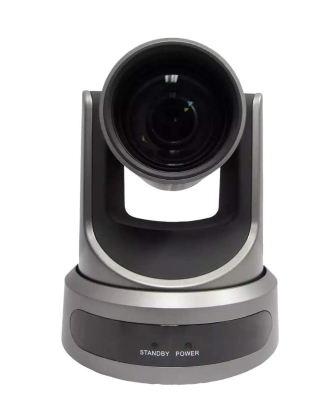
- Field of View: 60.7°(Wide) 2.28°(Tele)
- Image Capture Speed 60 fps
- VISCA in & out, & IR remote
- Over HDMI & IP Streaming
- Resolution: 1920x1080
- Ethernet, HDMI
- 30X optical zoom
Environmental
The PTZOptics and AViPAS cameras are similar in this category. Both sides have products that work well in varying environmental conditions.
I was surprised at how smoothly the PTZOptics 20X-USB Gen 2 panning, tilting and zooming worked in different conditions. Covering a large environment like an event center, conference, or house of worship is a seamless experience with the remote control of the PTZOptics.
The AViPAS cameras didn’t give me any issues while panning, tilting, or zooming in challenging conditions; however, the positioning of the camera is a factor in the quality of videos you will get. The AViPAS AV-1080 has a sealed outer shell to withstand outdoor wear and tear. For that, the AViPAS AV-1080 wins the environmental battle.
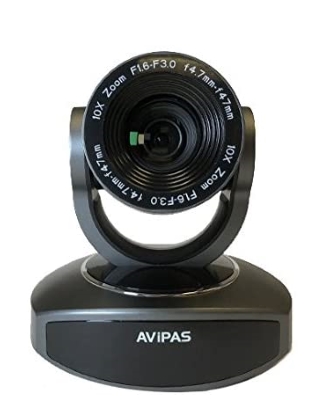
- High-quality CMOS sensor
- Frame rate up to 60 fps
- Optical Zoom 10 x
- Digital Zoom 5 x
- Full HD 1080p
- 6 x 5 x 6 inches and 3.8 pounds
- H.265/H.264 video compression
Conclusion
Comparing the AViPAS vs PTZOptics models in this article proved that both brands deliver the most updated features in PTZ cameras. AViPAS cameras are more consistent in different conditions and have versatile recording abilities. But PTZOptics takes most categories, with advanced software, control options, and better noise reduction.
Knowing more about these companies’ cameras will simplify your purchasing decision. But if you want a full suite of features, PTZOptics will serve you better.
-
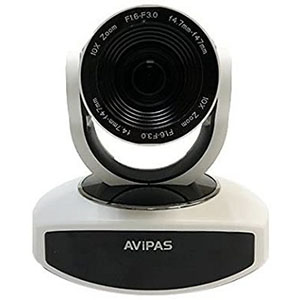
AViPAS AV-1081W
- AViPAS
- | 700
-
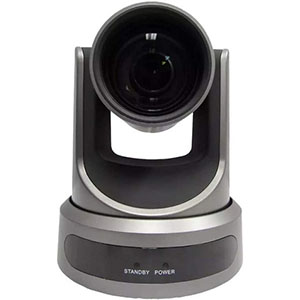
PTZ Optics PT30X-SDI-GY-G2
- PTZ Optics
- | 1600
-
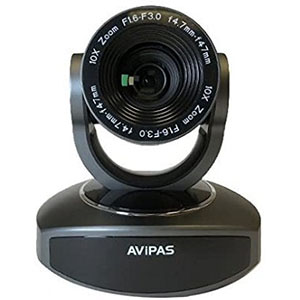
AViPAS AV-1081G
- AViPAS
- | 600
-
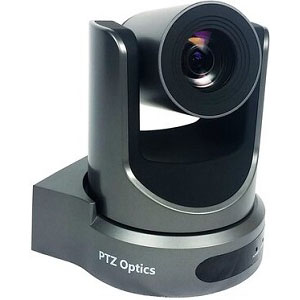
PTZ Optics 20X-SDI
- PTZ Optics
- | 1700
-
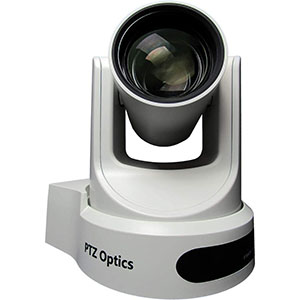
PTZ Optics PT30X-SDI-WH-G2
- PTZ Optics
- | 2200
